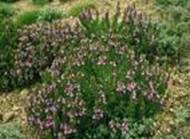| Kingdom | Plantae |
| unranked | Angiosperms |
| unranked | Eudicots |
| unranked | Asterids |
| Order | Lamiale |
| Family | Lamiaceae |
| Genus | Satureja |
| Species | montana |
| Binomial name | Satureja montana |
Other Common Names:
The other common names savory is mountain savory.
History
Winter savory is a perennial woody shrub.Savory, an herb rich in tradition and legend, has such a fine taste that a whole class of cookery is attached to it.

Description
Winter Savoury is an easy to grow, perennial shrub with little pointed green leaves, which have a spicy, peppery flavour.Savory have narrow, pointed, dark green leaves that grow out of the nodes. The stems are woody at the base, diffuse, much branched.



Range
Savory is widely distributed extending from Southern Europe to North Africa.At times it is also naturalized in Britain.
Habitat
The savories prefer a somewhat dry soil and will survive even where the land is not too fertile. For the best flavour, plant them in full sun. It is generally seen in old walls, dry banks and rocks on hillsides, usually on calcareous soils. The plant prefers light (sandy) and medium (loamy) soils, requires well-drained soil and can grow in nutritionally poor soil.
Cultivation
The plant prefers acid, neutral and basic (alkaline) soils and can grow in very alkaline soil. It cannot grow in the shade. It requires dry or moist soil and can tolerate drought. Winter savoury is propagated by cuttings or divisions. Plant the winter savoury is a slightly shaded spot in the spring. It will only need about 6 hours of sun a day. Provide adequate space because the plant can grow to a height of 15 inches or more. Dig holes for the seeds that are 1/8 inch deep. The soil should be dry when seeds are planted and the dirt should be placed loosely over the seeds. Separate the seeds by 3 inches. The rows should be at least 3 feet apart. The winter savoury can be planted alongside the summer savory that may be in your garden. Water the winter savory sparingly. The winter savory plant is hardy and does not need a lot of water to survive. Too much moisture in the soil around the plant will kill it. Cut the leaves from the plant as needed. As soon as the leaves begin to appear, you can snip and dry the leaves for culinary use. After flowering, winter savory should no longer be used for consumption. Replace the winter savory every two years. You can continue to grow the plant for several years. It is then recommended that you replace it with a new plant. To harvest for winter use, cut the stems in the fall, just before the flowers bloom. Cut winter savory sparingly.
Flowering Season
The flowers are hermaphrodite and it is in bloom from July to October.
Pests and Diseases
Savouries are not worried by pests and diseases to any great extent, with the exception of root rot, which can affect the winter varieties. Good drainage is essential for these plants and it is prudent to rotate crops once in every three years.
Parts Used

The flowering tops and the essential oil extracted from the wintersavory are of medicinal and commercial applications.
Medicinal Applications

• The whole herb, and especially the flowering shoots, is mildly antiseptic, aromatic, carminative, digestive, mildly expectorant and stomachic.
• Taken internally, it is said to be a sovereign remedy for colic and a cure for flatulence, whilst it is also used to treat gastro-enteritis, cystitis, nausea, diarrhoea, bronchial congestion, sore throat and menstrual disorders.
• A sprig of the plant, rubbed onto bee or wasp stings, brings instant relief.
• The plant is harvested in the summer when in flower and can be used fresh or dried.
• The essential oil forms an ingredient in lotions for the scalp in cases of incipient baldness.
• An ointment made from the plant is used externally to relieve arthritic joints.
• Its German name is Bohnenkraut or bean herb.
• The plant as a remedy for gas pains, as an appetite stimulant, and as an antiseptic gargle.
• It settles gas and stimulates the digestion, helping to alleviate flatulence and colic.
• Savory is warming and has been taken as a remedy for chest.
• It also helps for altitude sickness.
• An ointment made from savory works well for relief of minor rashes and skin irritations.
Commercial Applications

• These herbs are notably associated with bean dishes, ranging from soups to casseroles.
• Savory is also an ingredient of bouquet garni.
• The leaves of this small hardy bush are used to flavour stews and other savoury dishes.
• A peppery flavour, they are used mainly as a flavouring for cooked foods, especially beans, and also as a garnish for salads etc.
• The leaves can be used fresh or dried. A herb tea is made from the fresh or dried leaves.
• Savory also makes an attractive border plant and used in flower arrangements, fresh and dried.

The leaf is also a traditional ingredient in salami. The genus's Latin name is a derivative of the word "satyr", the mythical half-man, half-goat creature. It was said that the savories belonged to the satyrs. Winter savory was thought to decrease sexual drive, and summer savory to increase sexual drive. (Guess which became more popular!) The satyrs were notoriously lecherous creatures.In the language of flowers, including savory in a bouquet means "the truth is bitter".The famous French herbalist Maurice Mességué suggested savory instead of ginseng to help couples restore happiness in the bedroom.